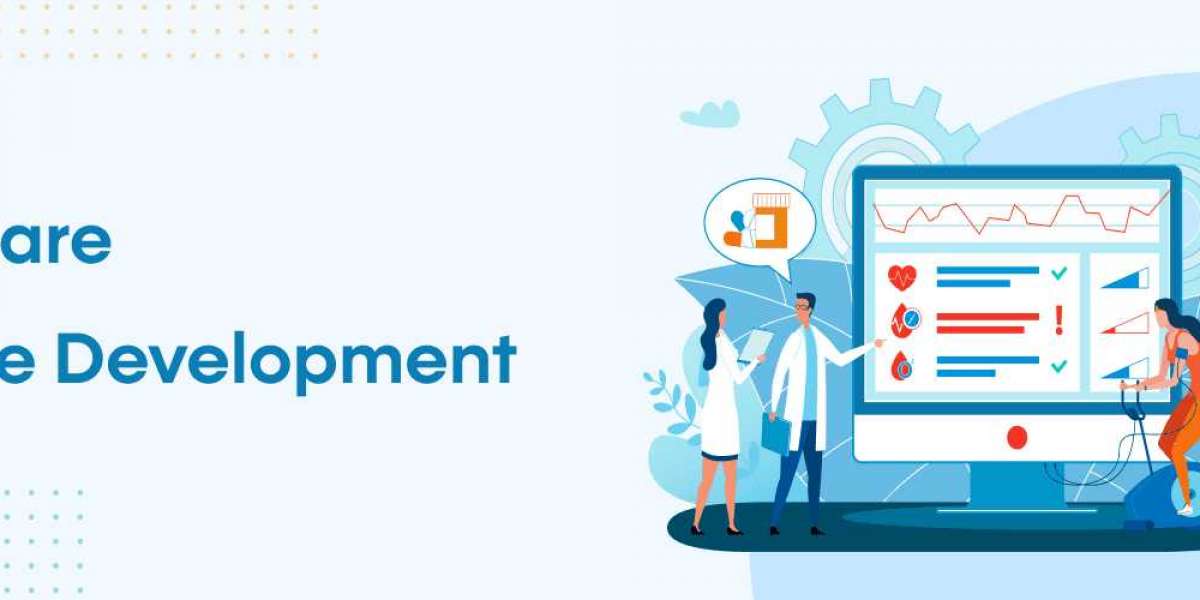The landscape of healthcare is rapidly evolving, and the demand for effective remote patient management is greater than ever. With advancements in technology and the rise of telemedicine, healthcare providers are increasingly turning to custom software solutions to enhance patient care and streamline operations. This blog explores the crucial role of custom software in remote patient management, examining its benefits, key features, and implementation challenges.
The Importance of Remote Patient Management
Remote patient management (RPM) refers to the use of digital technologies to monitor and manage patients outside traditional clinical settings. This approach not only facilitates timely interventions but also enhances patient engagement and adherence to treatment plans. As healthcare shifts toward value-based care, RPM has become an essential component for improving outcomes and reducing costs.
Key Benefits of Custom Software in Remote Patient Management
1. Personalized Patient Experience
Custom software allows healthcare providers to tailor their solutions to meet the unique needs of their patients. By incorporating patient preferences and specific health conditions, providers can create a more personalized experience. This may include features like personalized health plans, medication reminders, and customized communication channels, enhancing patient satisfaction and compliance.
2. Improved Data Management
Efficient data management is vital in healthcare. Custom software enables seamless integration with Electronic Health Records (EHRs), allowing for real-time data access and updates. This integration helps healthcare professionals track patient progress, identify trends, and make informed decisions based on comprehensive data analysis.
3. Enhanced Communication
Communication is a cornerstone of effective remote patient management. Custom software can facilitate secure messaging systems, video consultations, and automated reminders for appointments and medication schedules. This constant communication loop fosters a stronger patient-provider relationship and reduces the likelihood of missed appointments or non-adherence to treatment plans.
4. Remote Monitoring Capabilities
Many custom healthcare solutions come equipped with tools for remote monitoring of vital signs and health metrics. Devices like wearables can transmit data directly to the healthcare provider, allowing for continuous observation of patients' conditions. This capability is particularly beneficial for managing chronic diseases, as it enables timely interventions and reduces the need for in-person visits.
5. Scalability and Flexibility
Healthcare organizations vary in size and scope. Custom software can be designed to scale with an organization’s growth and adapt to changing needs. Whether a clinic is expanding its services or a hospital is integrating new specialties, custom solutions provide the flexibility to accommodate these changes without requiring a complete overhaul of existing systems.
Key Features of Custom Software for RPM
When developing custom software for remote patient management, several key features should be considered:
1. User-Friendly Interface
A simple, intuitive interface is crucial for encouraging patient engagement. The software should be easy to navigate for patients of all ages and technological backgrounds.
2. Data Security and Compliance
Given the sensitive nature of healthcare data, custom software must prioritize security. Compliance with regulations such as HIPAA is essential to protect patient information.
3. Integration Capabilities
The software should integrate seamlessly with existing healthcare systems, such as EHRs and billing software, to ensure a cohesive workflow.
4. Analytics and Reporting Tools
Custom software should provide analytics and reporting features to help healthcare providers monitor patient outcomes, identify areas for improvement, and make data-driven decisions.
5. Support for Multiple Communication Channels
Incorporating various communication channels—such as chat, video, and email—ensures that patients can connect with healthcare providers in their preferred manner.
Challenges in Implementing Custom Software for RPM
While custom software offers numerous benefits, its implementation can present challenges:
1. Cost Considerations
Developing custom software can be expensive, particularly for smaller healthcare organizations. It’s important to weigh the long-term benefits against the initial investment.
2. User Adoption
Getting both patients and healthcare providers to embrace new technology can be a hurdle. Comprehensive training and ongoing support are essential to facilitate user adoption.
3. Regulatory Compliance
Navigating healthcare regulations can be complex. Custom software must be developed with compliance in mind, which can extend the development timeline.
4. Interoperability Issues
Ensuring that custom software integrates smoothly with existing systems can be challenging. Careful planning and testing are required to avoid disruptions in workflow.
Conclusion
Custom software plays a pivotal role in the future of remote patient management, offering personalized experiences, enhanced data management, and improved communication between patients and healthcare providers. As the demand for remote care continues to grow, investing in a reliable custom healthcare software development company can provide organizations with the tools they need to succeed in this evolving landscape.
By addressing the unique needs of their patient populations and adapting to the challenges of remote management, healthcare providers can significantly enhance patient outcomes, reduce costs, and improve overall healthcare delivery. The future of healthcare is undoubtedly digital, and custom software solutions will be at the forefront of this transformation.
FAQs
1. What is remote patient management?
Remote patient management refers to the use of technology to monitor and manage patients outside of traditional healthcare settings, typically involving real-time data collection and communication.
2. Why is custom software important in healthcare?
Custom software allows for tailored solutions that meet the specific needs of healthcare providers and patients, improving efficiency, data management, and patient satisfaction.
3. What are the main features to look for in RPM software?
Key features include a user-friendly interface, robust data security, integration capabilities, analytics tools, and support for multiple communication channels.
4. What are the challenges of implementing custom software in healthcare?
Challenges include cost considerations, user adoption, regulatory compliance, and ensuring interoperability with existing systems.
5. How can a healthcare organization choose the right custom software development company?
Organizations should look for experience in healthcare, expertise in regulatory compliance, a solid portfolio, and positive client testimonials to ensure they select the right partner for their needs.







